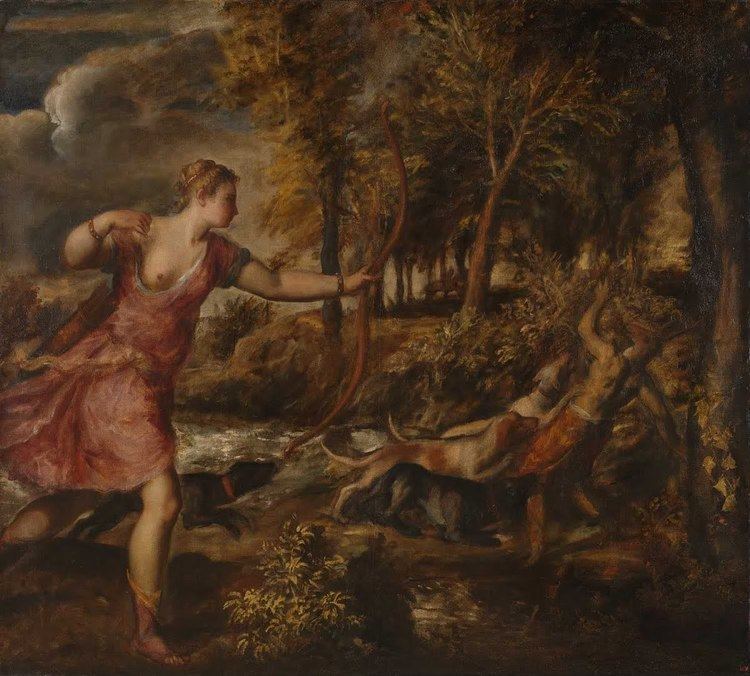Year c. 1559–1575 Media Canvas, Paint, Oil paint | Dimensions 1.78 m x 1.98 m Created 1559–1575 | |
 | ||
Periods Renaissance, Mannerism, Italian Renaissance, Venetian school Similar Titian artwork, Artwork at National Gallery - London, Renaissance artwork | ||
Titian the death of actaeon paintings the national gallery london
The Death of Actaeon is a late work by Italian Renaissance master Titian, painted in 1559 to 1575 as an oil on canvas and now housed in the National Gallery of London, United Kingdom. It is probably one of the two paintings the artist states he has started and hopes to finish (one of which he calls "Actaeon mauled by hounds") in a letter to their commissioner Philip II of Spain during June 1559. However, most of Titian's work on this painting possibly dates to the mid-1560s, and as Titian seems never to have resolved it to his satisfaction, the painting remained in his studio until his death in 1576. The painting's subject had been completed well before 1651 however, because it was featured as part of Archduke Leopold Wilhelm's art collection by David Teniers the Younger:
Contents
- Titian the death of actaeon paintings the national gallery london
- George shaw the death of actaeon the national gallery london
- References
It is a sequel of Titian's work Diana and Actaeon showing the story's tragic conclusion, which approximately follows the Roman poet Ovid's account in the Metamorphoses: after Actaeon surprised the goddess Diana bathing naked in the woods, she transformed him into a stag and he was attacked and killed by his own hounds. Both paintings belong to a group of large-scale mythological paintings inspired by the Metamorphoses and referred to by Titian himself as ‘poesie’, the visual equivalent of poetry, which he began producing for Philip II of Spain in 1551 and which also include Danaë and Venus and Adonis (Museo del Prado, Madrid), Perseus and Andromeda (Wallace Collection, London), The Rape of Europa (Isabella Stewart Gardner Museum, Boston) and Diana and Callisto (National Gallery).
The public campaign in 1971 to buy it for the United Kingdom was one of the great successes of Martin Davies's directorship of the National Gallery and it was eventually purchased in 1972 with a special grant and Art Fund and Pilgrim Trust contributions, as well as via funds raised by a public appeal. As catalogue number NG6420, it now usually hangs in the Central Hall.
